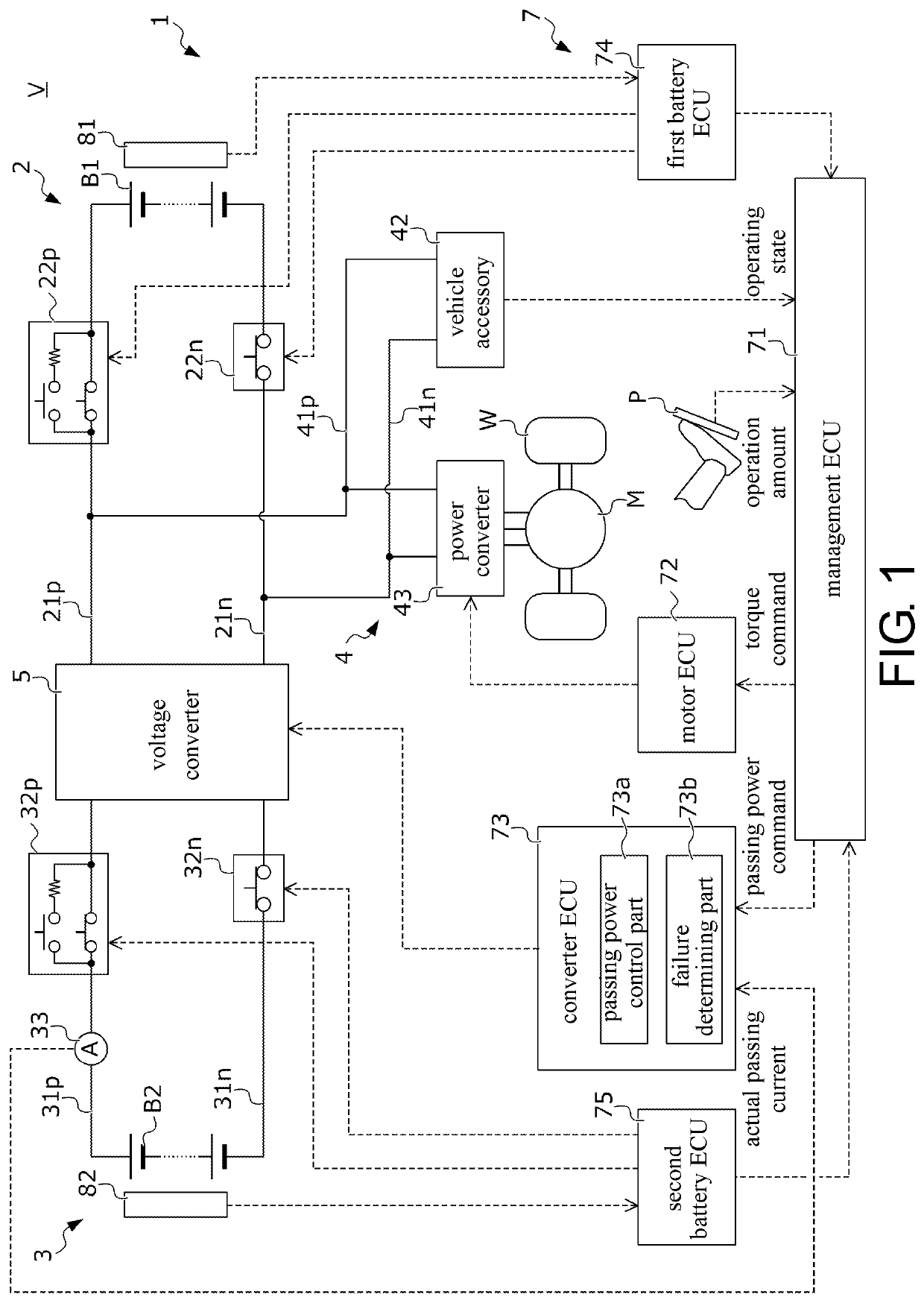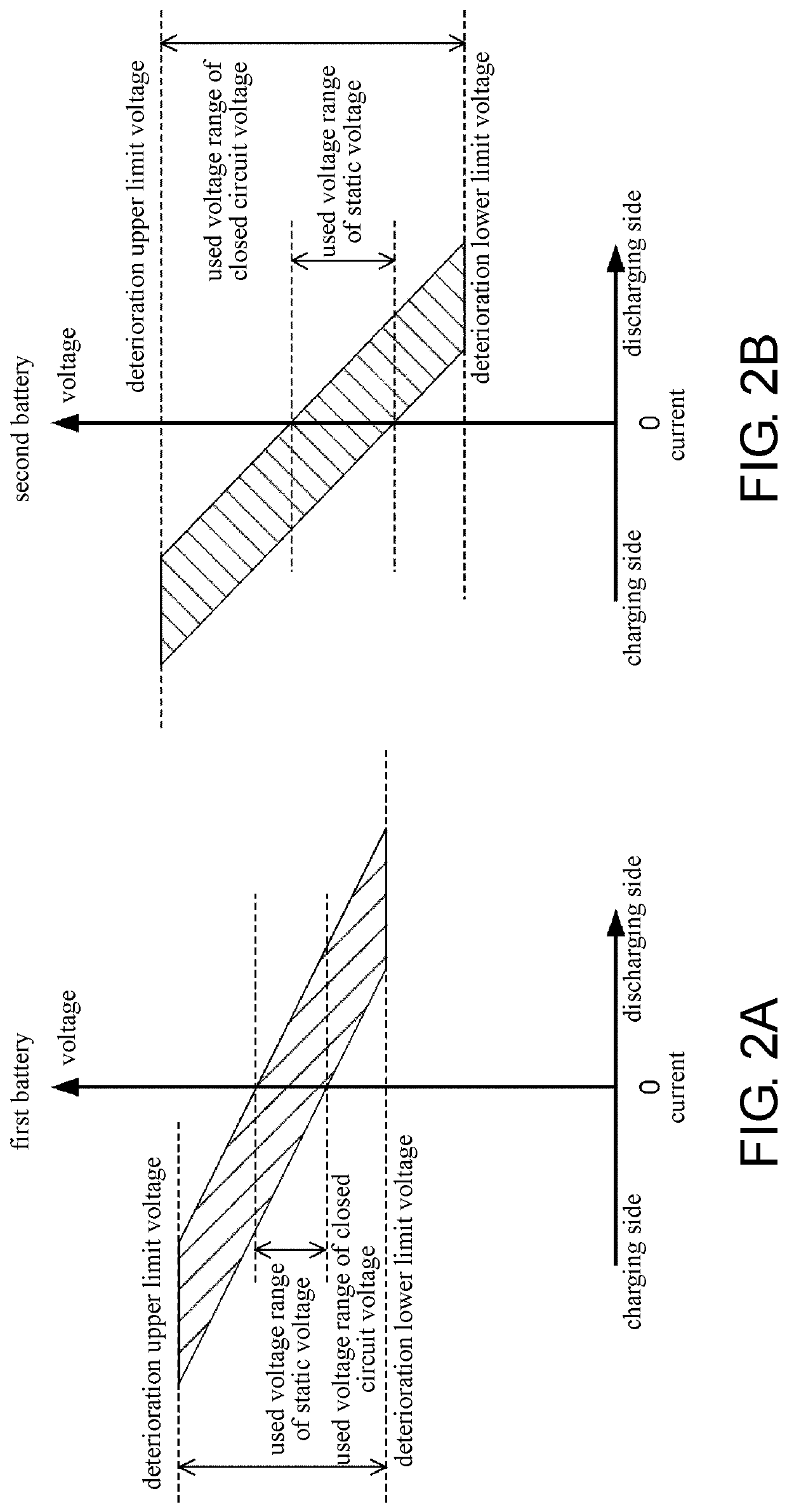Power system
a power system and power technology, applied in the direction of electric variable regulation, process and machine control, instruments, etc., can solve the problem that the voltage converter may be erroneously determined as failing
- Summary
- Abstract
- Description
- Claims
- Application Information
AI Technical Summary
Benefits of technology
Problems solved by technology
Method used
Image
Examples
Embodiment Construction
[0020](1) In the power system of the disclosure, the high voltage circuit and the low voltage circuit are connected by the voltage converter. The high voltage circuit has the high voltage power source. The low voltage circuit has the low voltage power source. The used voltage range of the low voltage power source with respect to the closed circuit voltage overlaps with the high voltage power source, and the static voltage of the low voltage power source is lower than the high voltage power source. The passing current control section operates the voltage converter so that the passing current flowing through the voltage converter becomes the target current. When the voltage converter in such power system fails, the passing current that is of an unintentional magnitude may flow from the side of the high voltage circuit to the side of the low voltage circuit. Therefore, the failure determining section determines that the voltage converter fails in the case where the difference between t...
PUM
 Login to View More
Login to View More Abstract
Description
Claims
Application Information
 Login to View More
Login to View More - R&D
- Intellectual Property
- Life Sciences
- Materials
- Tech Scout
- Unparalleled Data Quality
- Higher Quality Content
- 60% Fewer Hallucinations
Browse by: Latest US Patents, China's latest patents, Technical Efficacy Thesaurus, Application Domain, Technology Topic, Popular Technical Reports.
© 2025 PatSnap. All rights reserved.Legal|Privacy policy|Modern Slavery Act Transparency Statement|Sitemap|About US| Contact US: help@patsnap.com



